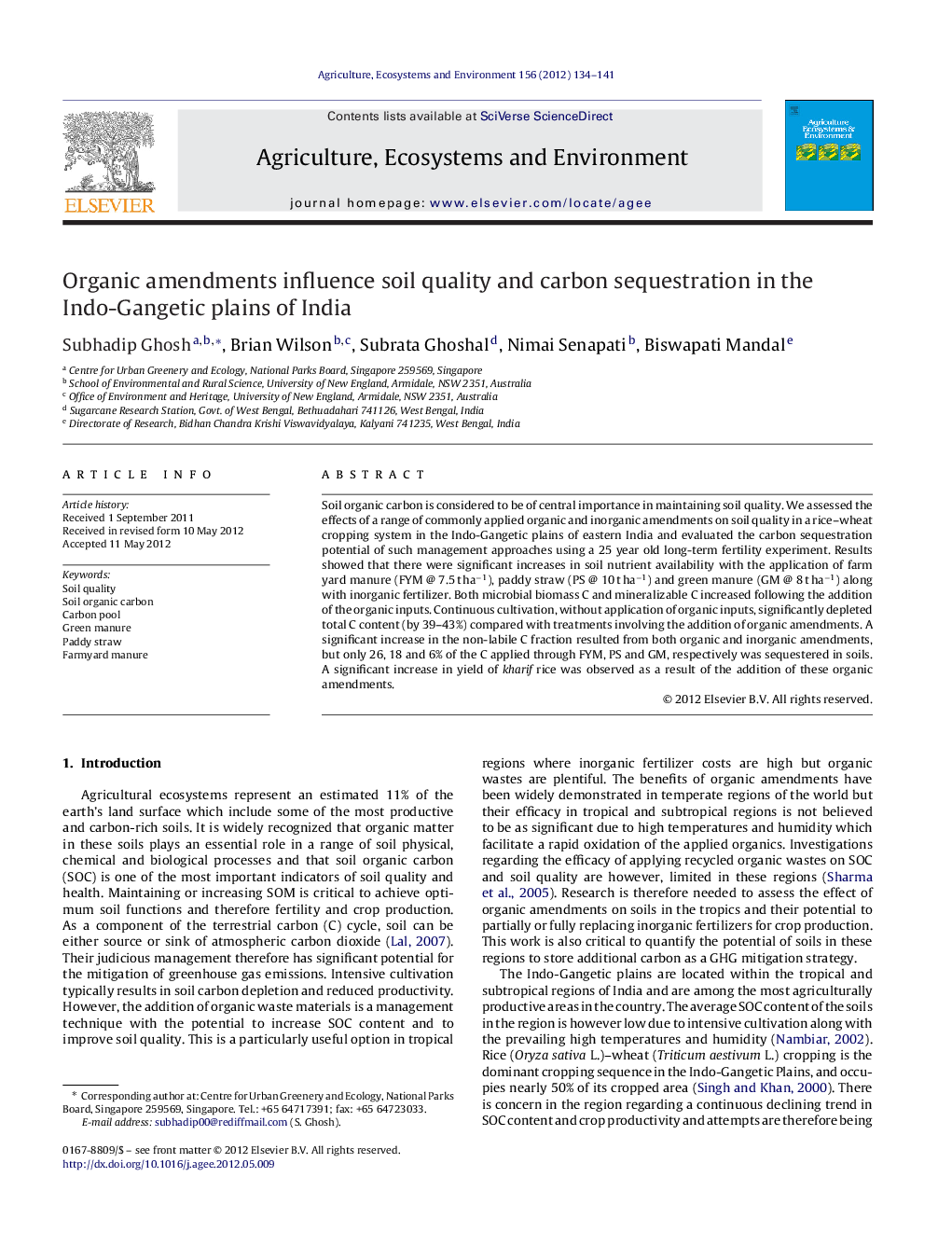| Article ID | Journal | Published Year | Pages | File Type |
|---|---|---|---|---|
| 2414481 | Agriculture, Ecosystems & Environment | 2012 | 8 Pages |
Soil organic carbon is considered to be of central importance in maintaining soil quality. We assessed the effects of a range of commonly applied organic and inorganic amendments on soil quality in a rice–wheat cropping system in the Indo-Gangetic plains of eastern India and evaluated the carbon sequestration potential of such management approaches using a 25 year old long-term fertility experiment. Results showed that there were significant increases in soil nutrient availability with the application of farm yard manure (FYM @ 7.5 t ha−1), paddy straw (PS @ 10 t ha−1) and green manure (GM @ 8 t ha−1) along with inorganic fertilizer. Both microbial biomass C and mineralizable C increased following the addition of the organic inputs. Continuous cultivation, without application of organic inputs, significantly depleted total C content (by 39–43%) compared with treatments involving the addition of organic amendments. A significant increase in the non-labile C fraction resulted from both organic and inorganic amendments, but only 26, 18 and 6% of the C applied through FYM, PS and GM, respectively was sequestered in soils. A significant increase in yield of kharif rice was observed as a result of the addition of these organic amendments.
► Various organic amendments assessed for soil quality and C sequestration potential. ► Application of fertilizer and organic amendments led to enhanced soil quality. ► Inorganic fertilizer with organic inputs helped to maintain yield sustainability. ► Fertilizer with organic amendments increased nutrient content and enzyme activity. ► Long-term addition of organic inputs increased total C and its non-labile fractions.
